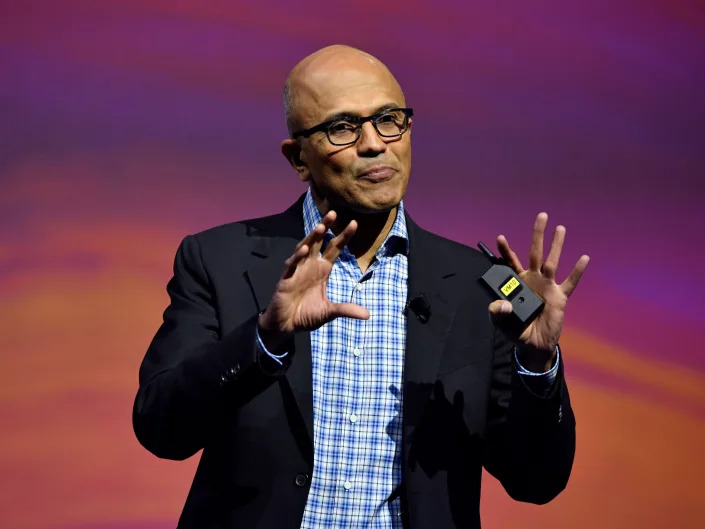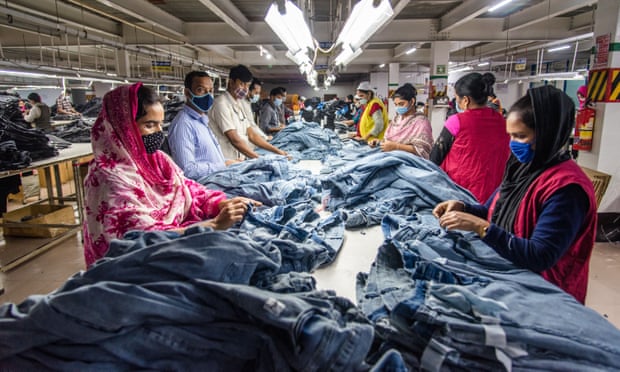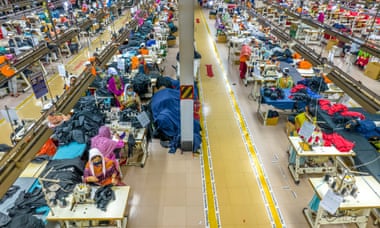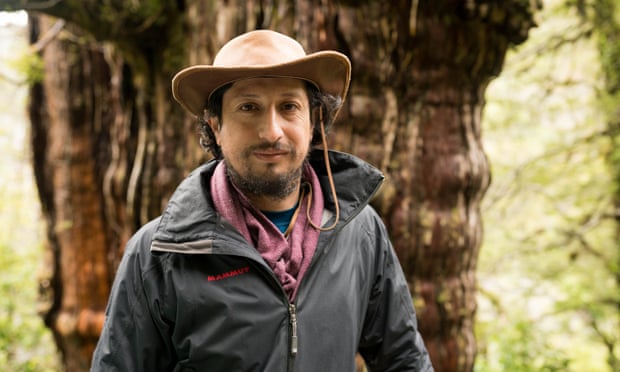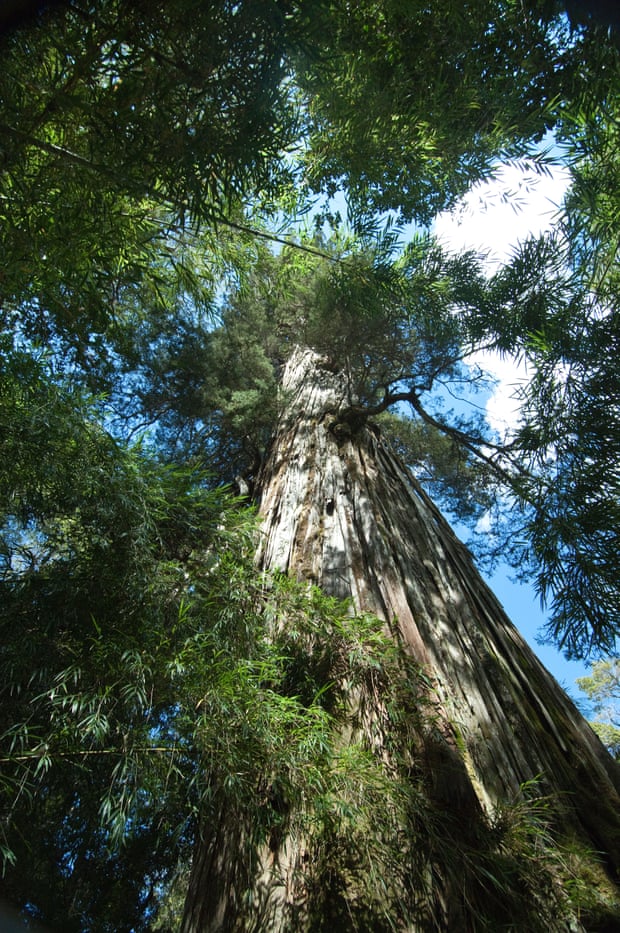Paul Mozur, Adam Satariano and Aaron Krolik
Fri, September 23, 2022 at 6:19 AM·16 min read

Four days into the war in Ukraine, Russia’s expansive surveillance and censorship apparatus was already hard at work.
Roughly 800 miles east of Moscow, authorities in the Republic of Bashkortostan, one of Russia’s 85 regions, were busy tabulating the mood of comments in social media messages. They marked down YouTube posts that they said criticized the Russian government. They noted the reaction to a local protest.
Then they compiled their findings. One report about the “destabilization of Russian society” pointed to an editorial from a news site deemed “oppositional” to the government that said President Vladimir Putin was pursuing his own self-interest by invading Ukraine. A dossier elsewhere on file detailed who owned the site and where they lived.
Sign up for The Morning newsletter from the New York Times
Another Feb. 28 dispatch, titled “Presence of Protest Moods,” warned that some had expressed support for demonstrators and “spoke about the need to stop the war.”
The report was among nearly 160,000 records from the Bashkortostan office of Russia’s powerful internet regulator, Roskomnadzor. Together, the documents detail the inner workings of a critical facet of Putin’s surveillance and censorship system, which his government uses to find and track opponents, squash dissent and suppress independent information even in the country’s furthest reaches.
The leak of the agency’s documents “is just like a small keyhole look into the actual scale of the censorship and internet surveillance in Russia,” said Leonid Volkov, who is named in the records and is the chief of staff for the jailed opposition leader Alexei Navalny.
“It’s much bigger,” he said.
Roskomnadzor’s activities have catapulted Russia, along with authoritarian countries such as China and Iran, to the forefront of nations that aggressively use technology as a tool of repression. Since the agency was established in 2008, Putin has turned it into an essential lever to tighten his grip on power as he has transformed Russia into an even more authoritarian state.
The internet regulator is part of a larger tech apparatus that Putin has built over the years, which also includes a domestic spying system that intercepts phone calls and internet traffic, online disinformation campaigns and the hacking of other nations’ government systems.
The agency’s role in this digital dragnet is more extensive than previously known, according to the records. It has morphed over the years from a sleepy telecom regulator into a full-blown intelligence agency, closely monitoring websites, social media and news outlets, and labeling them as “pro-government,” “anti-government” or “apolitical.”
Roskomnadzor has also worked to unmask and surveil people behind anti-government accounts and provided detailed information on critics’ online activities to security agencies, according to the documents. That has supplemented real-world actions, with those surveilled coming under attack for speaking out online. Some have then been arrested by police and held for months. Others have fled Russia for fear of prosecution.
The files reveal a particular obsession with Navalny and show what happens when the weight of Russia’s security state is placed on one target.
The system is built to control outbursts such as the one this week, when protesters across Russia rallied against a new policy that would press roughly 300,000 people into military service for the war in Ukraine. At least 1,200 people have already been detained for demonstrating.
More than 700 gigabytes of records from Roskomnadzor’s Bashkortostan branch were made publicly available online in March by DDoSecrets, a group that publishes hacked documents.
The New York Times built software and a search tool to analyze the Russian-language documents, spreadsheets, videos and government presentations. Five individuals directly targeted by Roskomnadzor in the files were interviewed, along with lawyers, activists and companies who have battled the agency and other experts on Russian surveillance and censorship.
Roskomnadzor did not respond to requests for comment.
“This is part of authoritarianism,” said Abbas Gallyamov, a former top government official in Bashkortostan whom Roskomnadzor scrutinized because of his criticism of Putin. “They are watching.”
Putin’s Eyes on the Internet
Roskomnadzor (pronounced Ros-com-nod-zor) was started in 2008 as a bureaucratic backwater with a few dozen employees who regulated radio signals, telecom and postal delivery. Its role expanded as Kremlin concerns grew about the internet, which was under less state control than television and radio, leading to more activity from independent and opposition media.
After social media helped facilitate mass protests during the 2010 Arab Spring and in Moscow starting in 2011, Russian authorities had Roskomnadzor exert more control, said Andrei Soldatov, co-author of a book on Russian internet censorship and surveillance.
From its headquarters in Moscow, the agency squeezed companies that provided internet access. Starting in 2012, the year Putin retook the presidency, Roskomnadzor built a blacklist of websites that the companies were required to block. That list, which grows constantly, now includes more than 1.2 million banned URLs, including local political news websites, social media profile pages, pornography and gambling platforms, according to Roskomsvoboda, a civil society group tracking the blocks.
Over the past decade, the agency also fined and penalized Google, Facebook, Twitter and Telegram to force them to remove what authorities deemed to be illicit content. In 2016, LinkedIn was shut down in Russia after being sanctioned for not storing data on Russian users in the country’s data centers.
By 2019, authorities wanted internet control to go further. Roskomnadzor ordered new censorship technology, known as a “technical means for countering threats,” installed in telecom networks around the country, including Bashkortostan, according to the documents. The agency then blocked and slowed down websites from Moscow.
Officials demanded that local internet services confirm that the censorship systems had been installed, according to the documents. Schematics showed where the censorship boxes should be placed in the network. Roskomnadzor workers visited sites to be sure the equipment was installed correctly and sent reports on the efficacy of the technology.
One early target of the blocking system was Twitter. In 2021, authorities throttled access to the social media service to a crawl. Since the invasion of Ukraine this year, Roskomnadzor has also blocked Facebook, Instagram and other websites, as well as many virtual private networks, or VPNs, which are used to bypass internet controls.
In 2020, Andrei Lipov, a government technocrat who supports a Russian internet that is more closed off from the West, took charge of Roskomnadzor. Under his guidance, the agency has operated even more like an intelligence service.
Just in Bashkortostan, an oil-rich region with about 4 million residents, Roskomnadzor tracked the online activities of hundreds of people and organizations. It gathered information about government critics and identified shifting political opinions on social media. It compiled dossiers on independent media outlets and online influencers who shared information unfavorable to the government that might gain traction with the Russian public.
“Roskomnadzor was never part of this game before of providing political intelligence,” said Soldatov, a fellow at the Center for European Policy Analysis, a pro-democracy think tank. “They’re getting more and more ambitious.”
Vladimir Voronin, a lawyer who has represented activists and media groups targeted by Roskomnadzor, said the agency also became closer to the Federal Security Service, or FSB, the domestic intelligence agency once led by Putin. The FSB operates a spy system, called the System for Operative Investigative Activities, which is used to monitor phone calls and internet traffic in Russia.
Roskomnadzor helps the FSB watch opponents and identify new threats to Putin, Voronin said. “Roskomnadzor is more of a police agency and not only monitors, but persecutes oppositionists, activists and the media,” he said.
Unlike more technologically savvy counterparts in China, where internet surveillance is more automated, much of the work of Russian censors is done manually, the documents show. But what Russia lacks in sophistication, it has made up for in determination.
In Bashkortostan, documents such as a six-page report on the regional “information space” from December 2021 summarized criticism of Putin from pundits and bloggers. In the report, officials measured sentiment with a chart showing events that increased public disapproval, such as videos involving opposition activists and news of a possible invasion of Ukraine.
At times, the assessments sound almost like weather forecasts. “Calm with separate minor pockets of tension,” one Roskomnadzor report said, summarizing public sentiment after the arrest of a local activist.
Social media was viewed by the agency as a form of “soft power” that could “influence the opinion of the masses,” according to one document. Roskomnadzor workers watched for “destabilizing subjects” such as opposition groups and “antimilitarism,” but also social issues such as drug legalization and “sexual freedoms,” according to some of the documents. Meduza, an independent Russian-language news organization, earlier reported on these specific documents.
Roskomnadzor also tracked local state-run media and political leaders so that Putin could keep an eye on both enemies and allies, said Gallyamov, who is now a political commentator living outside Russia.
In some cases, censors recorded their screens showing detail down to the movements of their computer mouse as they watched over the internet. They monitored overtly political videos and, at other times, focused on less obviously worrisome content such as a viral song by young rapper KEML. Bashkortostan is known as a hub for rap in Russia.
Roskomnadzor helped Putin centralize power far from Moscow. The regional office in Bashkortostan only shared a fraction of its work with the local government, according to one document. Many reports were instead sent straight to the FSB and other central agencies.
The scrutiny took a toll on surveillance targets. ProUfu.ru, a local news site in Bashkortostan that wrote critically about the government, said authorities pressured businesses to stop advertising with it. In the records, censors flagged ProUfu.ru for the critical Ukraine editorial written about Putin in February. The group was the subject of a regularly updated dossier about its coverage, ownership and top editor.
“Businessmen are threatened with closure for enterprises if they dare to meet us halfway,” the group, which now goes by Prufy, said on its website. “Our resources are depleted.” Prufy declined to comment.
Hunting Navalny
Navalny, the imprisoned leader of Russia’s largest opposition movement, overshadows Putin’s other domestic opponents. In Roskomnadzor’s Bashkortostan office, no mention of Navalny was too small to escape notice.
Workers flagged articles and social media comments about Navalny and websites where his name appeared in the margins as a related link. In monthly reports, they tallied online criticism of the government day by day, often alongside major news developments related to Navalny.
After ProUfu.ru published a video of an interview with Navalny in 2020, the site was charged with an administrative violation for posting information about “criminally punishable acts,” according to a record of the infraction included in the files.
The agency worked with different branches of the Russian security apparatus to go after not just Navalny but his supporters. In Bashkortostan, the main target was Lilia Chanysheva, a 40-year-old lawyer.
Chanysheva, who has been a supporter of Navalny’s for at least a decade, moved in 2013 from Moscow to Ufa, Bashkortostan’s largest city and where her parents lived. In 2017, she traded a well-paying auditing job with the international consulting firm Deloitte to start a regional office for Navalny.
“She understood that if she did not do it, no one would,” said Maksim Kurnikov, the former editor of a regional branch of the radio station Echo of Moscow, who got to know Chanysheva in Ufa.
Chanysheva planned protests and linked groups who not just disagreed with Putin’s rule but were motivated by local issues such as government corruption and environmental exploitation in the mineral-rich Bashkortostan region. She was known for volunteering time to provide legal aid to anyone in need, friends and colleagues said.
Authorities watched her closely, according to the documents. In 2017, Roskomnadzor officials sent a letter to the FSB and other branches of the national security apparatus, warning that Navalny’s team was uniting “various small oppositional regional communities into a ‘united front.’”
Chanysheva faced random searches and police arrests. During a presidential campaign by Navalny before elections in 2018, she spent more than 45 days in jail for holding unauthorized protests and other offenses, colleagues said.
With authorities fond of detaining leaders well before organized protests, she made a habit of disappearing and then materializing at the rallies, they said.
“It made them look very stupid,” said Volkov, Navalny’s chief of staff, who hired Chanysheva.
Authorities included Chanysheva in regular reports about the activity of opposition figures who appeared in local and social media, including a 2020 meeting with activists who fought a real estate development that would involve cutting down a forest.
Roskomnadzor confronted her with minor infractions, including violations of data-protection rules, according to the records. She topped a list on another document that suggested individuals for expanded monitoring and surveillance.
On a spreadsheet of “leaders of opinion” in Bashkortostan, Roskomnadzor officials highlighted Chanysheva’s name in dark red along with links to her social media accounts and follower totals.
In October 2020, she was placed on a list of the region’s “destabilizing sources” and was cited for “criticizing Russian federal and regional government.”
In April 2021, Navalny’s organizations were forced to disband after the Kremlin listed them as illegal extremist groups. Fearful of being imprisoned, many top operatives left Russia. Chanysheva stayed. She was arrested on charges of extremism in November.
Roskomnadzor’s censors noted her arrest “caused a resonance both among activists and users on social networks,” according to a record of the incident. They were not overly concerned. At the top of the report, they wrote: “Protest activity was at a relatively low level.”
Chanysheva, who is being held at a detention center in Moscow, could not be reached for comment. Voronin, her lawyer, said she spends her time writing letters and sorting trash from recycling. She faces a decade in prison.
The Lone Protester
In the first weeks of the war on Ukraine, Roskomnadzor censors ramped up, according to the documents. They focused not just on the war but its side effects, including the public response to a domestic crackdown on dissent and grumblings about the invasion’s effect on the rising cost of goods.
On Feb. 27, agency officials monitored the reaction to reports that a family from Ufa — including young children — was detained for protesting the war. Another report flagged an item that was spreading quickly online that described how the FSB brutally beat and electrocuted a protester.
“Some users negatively assessed the actions of law enforcement agencies,” they wrote, noting 200,000 users had viewed the news on the messaging app Telegram.
The files also showed how office life went on as normal for the censors, who are part of the security-state middle class that Putin has built over the past 20 years to consolidate power. The employees marked a national holiday celebrating women and shared memes. In a jocular video passed around the office, they joked about accidentally blocking the Kremlin website and bribing judges with alcohol and chocolate.
In March, the censors highlighted an Instagram post from a protest in Bashkortostan. The demonstrator, Laysan Sultangareyeva, stood in Tuymazy, an industrial town west of the regional capital, to decry the invasion of Ukraine.
The post showed Sultangareyeva holding a sign that read “No to Putin, No to War.” Comments were filled with emojis cheering her on.
At the protest, police arrested the 24-year-old political activist and kept her in jail overnight. Roskomnadzor censors described her arrest with terse and matter-of-fact language: “Took place, the protester was detained.”
In an interview, Sultangareyeva said police intimidated her, asked about her support for Navalny and made her take a drug test.
Sultangareyeva, whose Instagram profile once said “making delicious coffee and trying to stay out of jail,” protested twice more in April. She was arrested again. Online posts were used as evidence against her, as were photos shared in a local anti-war Telegram channel. She was fined 68,000 rubles, or about $1,100.
“The fact that Roskomnadzor monitors social networks I did not know, but I guessed that they would not leave me without attention,” she said. She recently noticed police-affiliated accounts looking at her Instagram Stories and blocked them.
‘I Thought I Knew What Censorship Was’
Roskomnadzor’s tightening grip has manifested itself in the form of outright censorship.
Three days after DOXA, a media organization run by university students and recent graduates, posted a video calling on students to speak out against Putin in January 2021, a letter arrived from the agency.
It said the video had been added to a registry of “prohibited information” that “encouraged minors to participate in activities that are dangerous to their health and lives.” Roskomnadzor ordered DOXA to take the video down, said Ilia Sagitov, a reporter for the site who has left Russia.
DOXA complied but then sued Roskomnadzor over the takedown. Sagitov said the site had been careful not to encourage protest directly in the video and argued there was nothing illegal in it.
At 6 a.m. on April 14, 2021, security forces struck back. In a coordinated raid, Russian police broke into the website’s offices and the apartments of four of its editors. They placed the editors under house arrest and forbade them from accessing the internet.
“We believe that they were tracking everything we were doing back then and desperately trying to find anything to oppress us in any way,” Sagitov said. “So they finally got it — our video — and immediately started to fabricate this case.”
Still, DOXA’s website was not blocked, and reporters continued publishing articles. Then came the war in Ukraine.
In February, the site published a guide to “anti-war disputes in the family and work,” which included 17 answers to the most common arguments justifying the war. Akin to stories in the United States that prepare people for contentious Thanksgiving dinner discussions, or how to speak to a climate-change denier, the article went viral. An illustration from the piece showed a young person debating the war with an older man.
This time, Roskomnadzor swiftly blocked each of DOXA’s three different websites. The sites remain down. Some staff have fled the country while others left the organization, fearing for their safety. Roskomnadzor has taken a similar tack elsewhere, blocking more heavily and widely than before, according to those who have been targeted.
“There’s no new level of competence, just a new bigger scale of repression — both digital and real world,” Sagitov said. “I thought I knew what censorship was, but it turned out I didn’t. Well, now I know.”
© 2022 The New York Times Company
